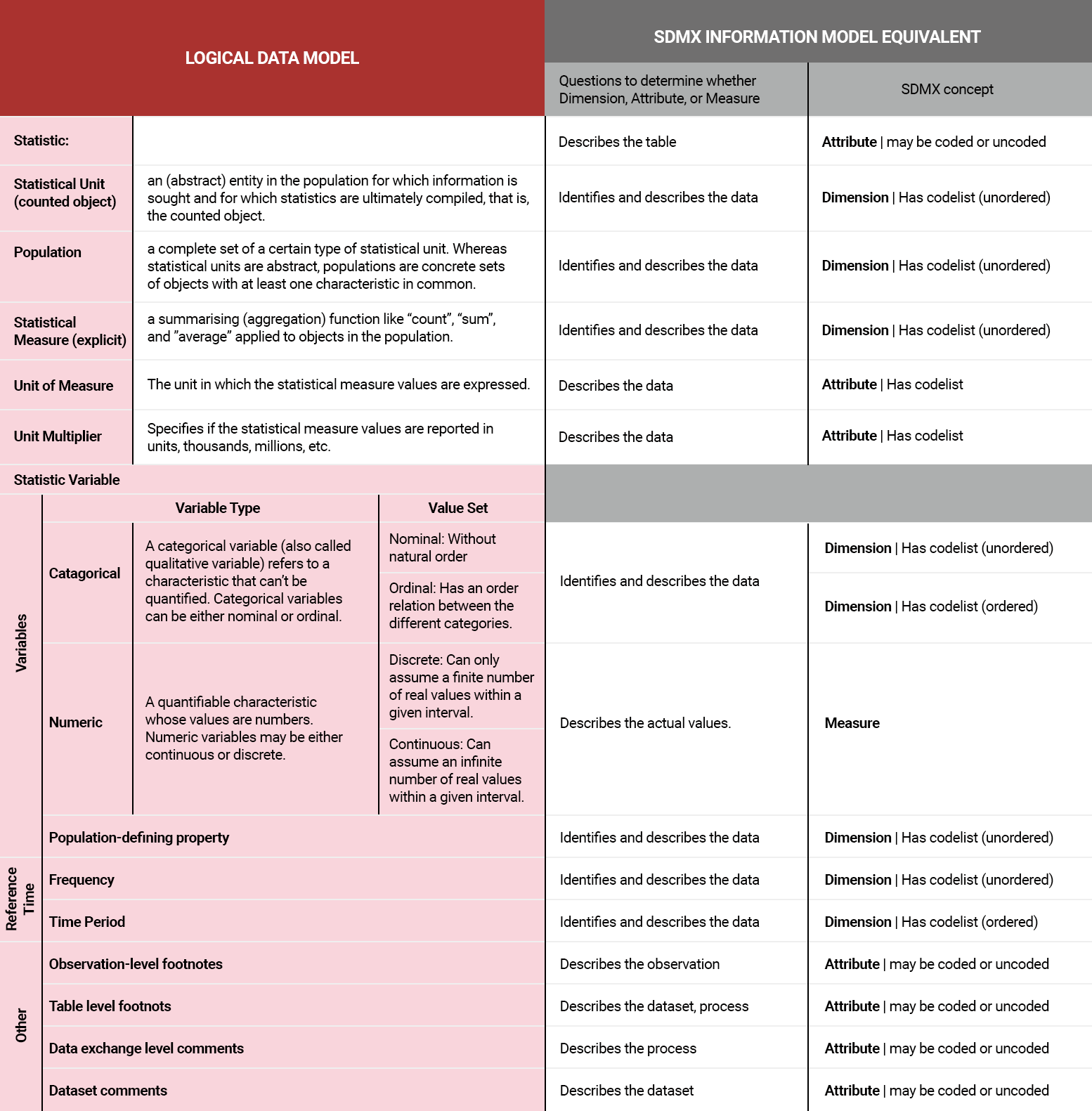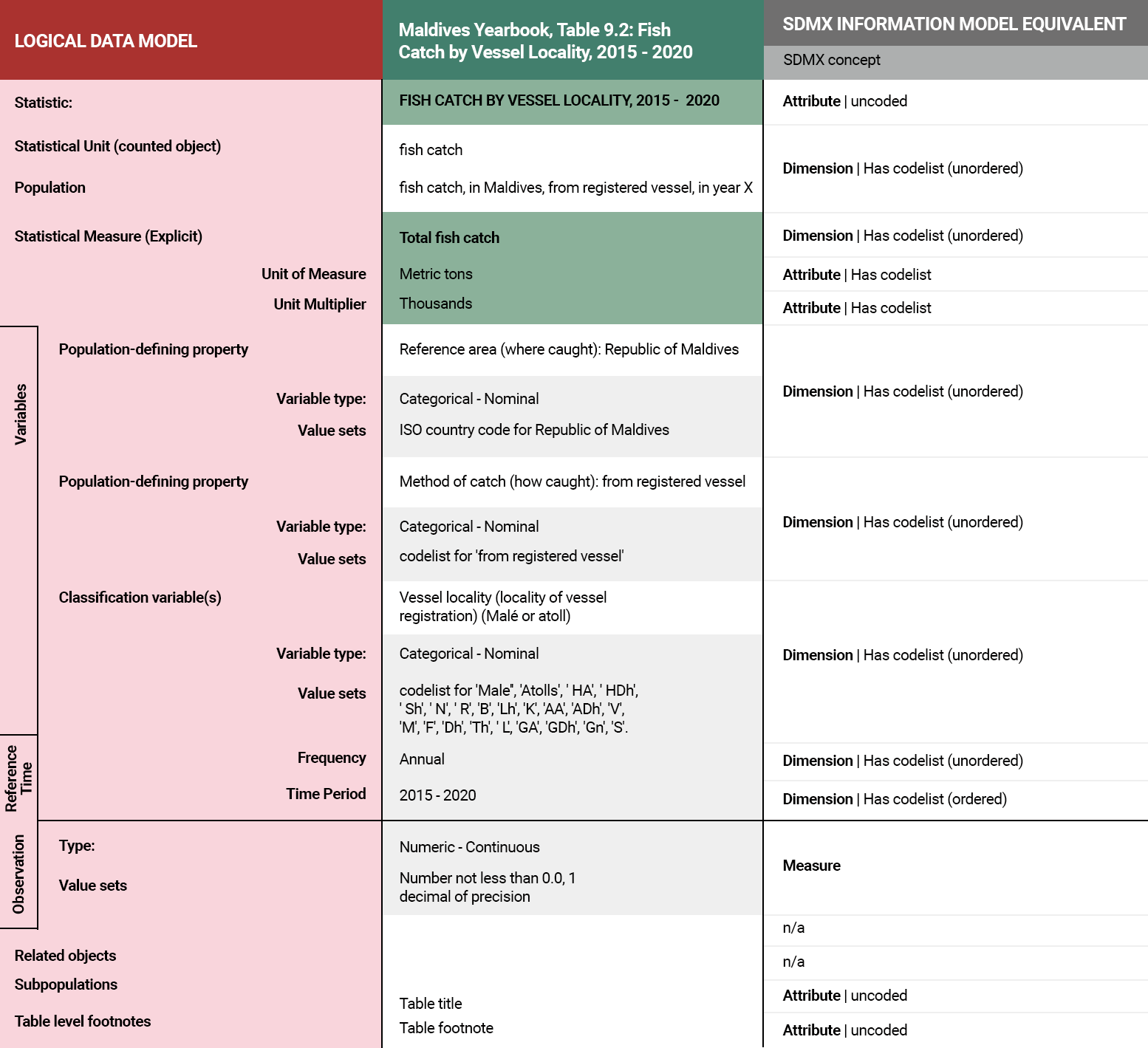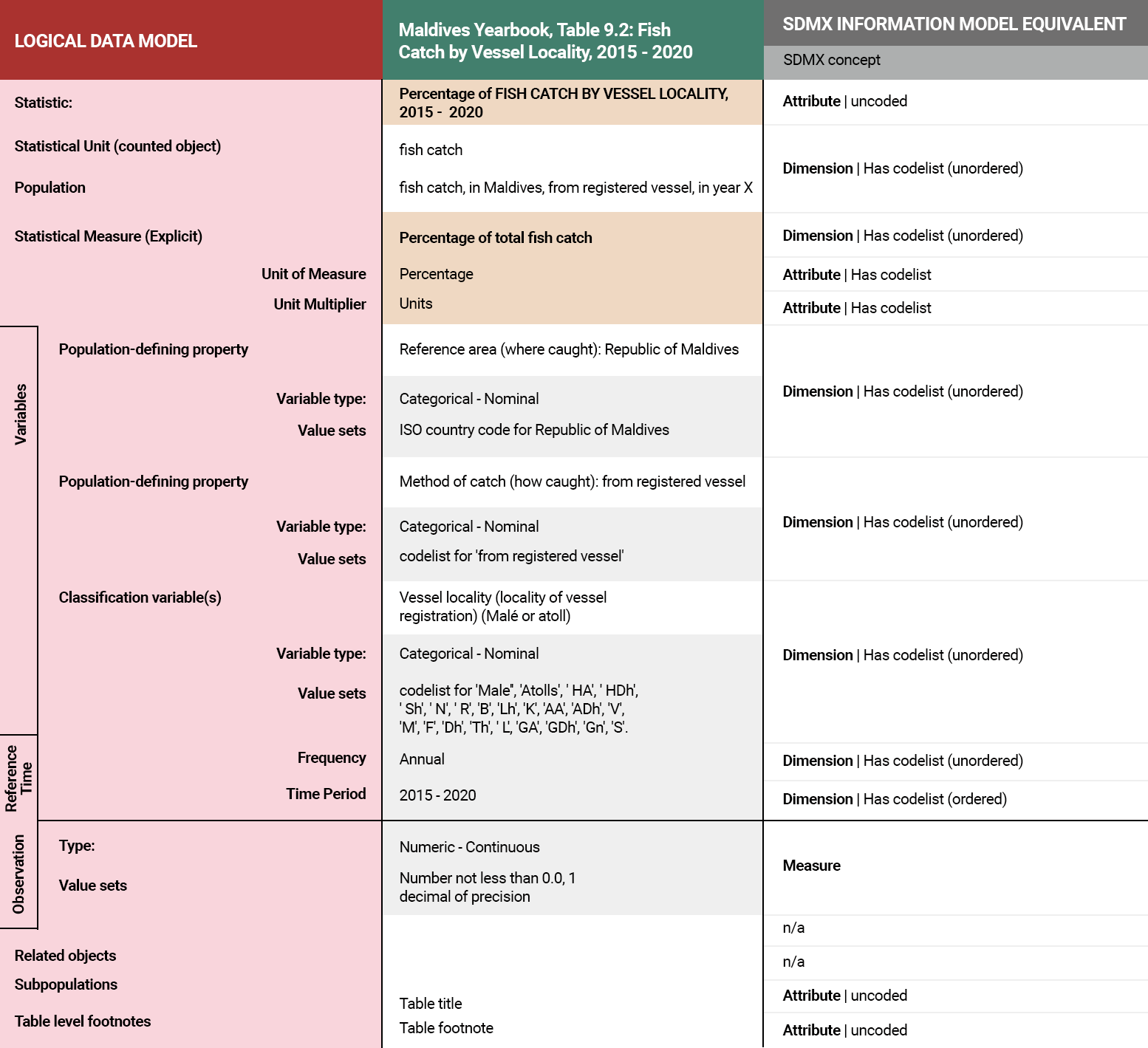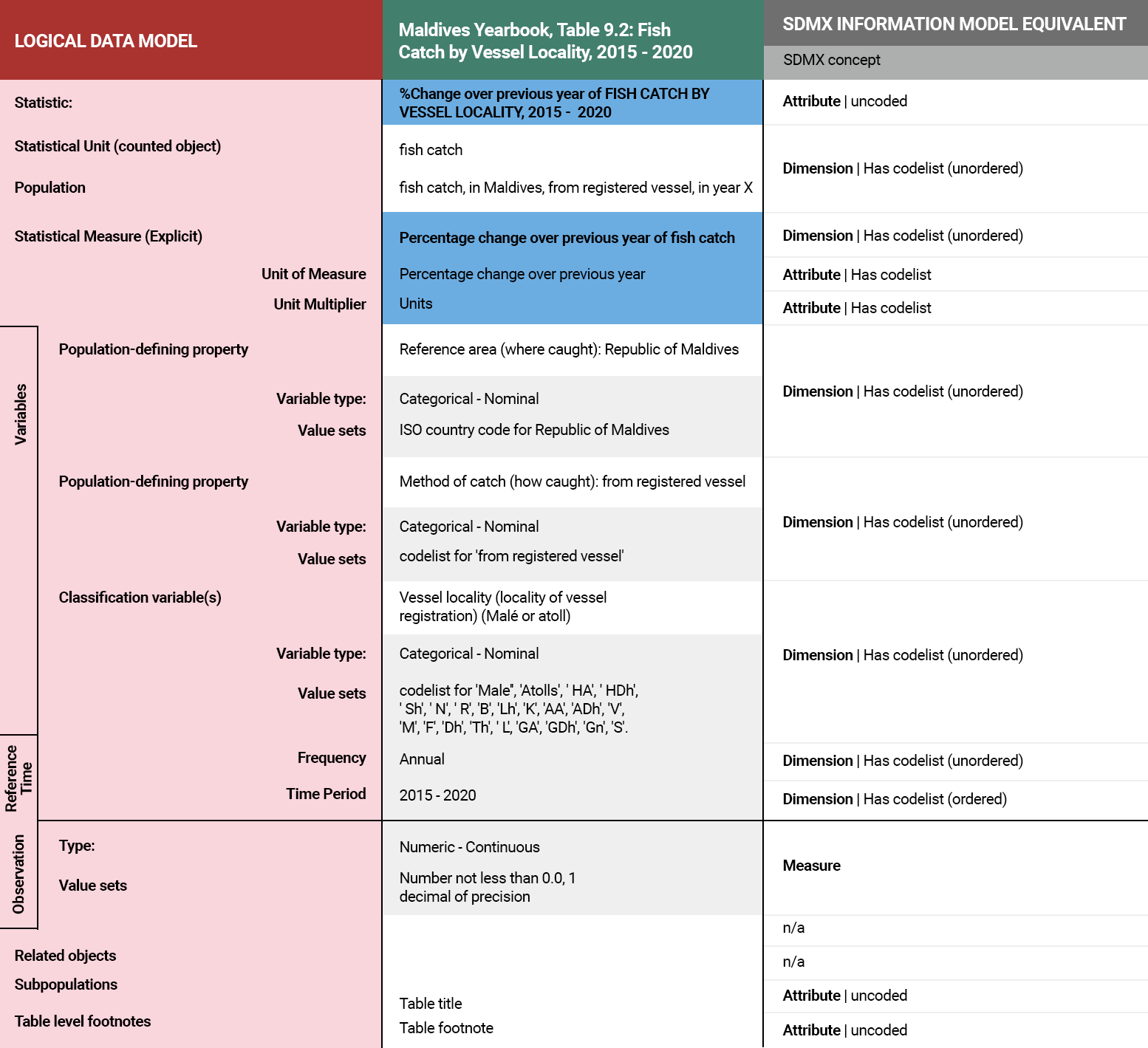Unit 3: Concept Mapping

SDMX does not introduce any new concepts for statisticians – it simply provides a framework for what statisticians already do.
In this unit, we’ll map the concepts and terminology used by statisticians to the SDMX Information Model.
Mapping statistical concepts to the SDMX Information Model
The SDMX Information Model consists of artefacts to:
- describe statistical data,
- support data governance, and
- support all statistical processes (data collection, production, reporting, and dissemination).
When mapping statistical concepts to the SDMX Information Model, we are primarily concerned with the SDMX artefacts which describe data.
As you learned in Unit 1: Essential SDMX Concepts, all statistics can be described using these three concepts:
Dimension vs Attribute – how to differentiate them?
Determining whether a concept is a dimension, or an attribute is not always obvious.
Looking at the question from the statistical perspective, a classification variable is always a dimension. In fact, there is a natural mapping from a statistical structural model to the SDMX Information Model which you’ll see later in our mapping table.
It’s important however to understand and be able to differentiate whether a statistical concept should be classified as a dimension or as an attribute. Recalling the specific role that each concept plays in describing data is the first step:
- a dimension both “identifies and describes” the data, whereas
- an attribute simply “describes” the data.
Dimension vs Attribute in practice
To differentiate between dimensions and attributes in practice, ask the following question:
“If the concept is assigned different values, does the data take on a different meaning?”
If the answer is:
- YES: the statistical concept should be identified as a dimension.
- NO: the statistical concept should be identified as an attribute.
Select each example to see this in practice for our FISH CATCH BY VESSEL LOCALITY table.
If the unit of measure is changed from kilograms to tons for the statistics on “Fish catch”, the semantic meaning of the data does not change.
We can therefore classify unit of measure as an attribute.
If the statistical measure is changed from “Total fish catch” to “Percentage of fish catch”, the meaning of the data are completely different.
We can therefore be confident in classifying statistical measure as a dimension.
Similarly, if the classification variable “Vessel locality” takes different values, the capital Malé vs an Atoll, the data have a different meaning.
So, the classification variable is a dimension.
Logical Data Model to SDMX Information Model equivalent
Evaluating the Logical Data Model using the SDMX concepts of dimension, attribute, or measure results in the creation of the following Logical Data Model to SDMX Information Model equivalent mapping table.
Select the table to enlarge. ![]()


SDMX Information Model
By applying the SDMX concepts of dimension, attribute, or measure we can produce mappings that fully describe and identify the data and metadata in our FISH CATCH BY VESSEL LOCALITY table in accordance with the SDMX Information Model.
Select each tab to see how.
What do you know?
In this Concept Mapping unit you learned that it’s important to differentiate whether a statistical concept should be classified as a dimension or as an attribute.
Which of the following best describes the difference between the two concepts.
Select your answer and then select Submit.
A dimension both “identifies and describes” the data, whereas an attribute simply “describes” the data.
A dimension both “identifies and describes” the data, whereas an attribute simply “describes” the data.
Coming next …
While complete insofar as the mapping is concerned, there are items in our SDMX Information Model which must be articulated in order to have a usable SDMX Information Model definition.
This is the focus of the next unit.


